Germán Frers: A Lifetime of Yacht Design Excellence
Published on February 9th, 2017
Boat International Media, the global authority on superyachting, has unveiled the prestigious winners of its 2017 ShowBoats Design Awards.
The annual awards honour the creative talents behind the most innovative, elegant and inspiring new yacht designs – sail and power – from the boards of the world’s leading yacht design studios.
Additionally, a special Lifetime Achievement Award is presented to a designer who has made an indelible impression on the yachting industry. This honor has been bestowed on Argentinean Germán Frers.
Some people are said to be born with a silver spoon; for Germán Frers it was more like a silver pencil. There was little doubt that Germán would learn naval architecture as his father, also Germán, was a leading figure in sailboat design.
Germán grew up racing dinghies and later crewed on powerful yachts his father designed for offshore races such as Buenos Aires to Rio, the Bermuda Race and Onion Patch, Admiral’s Cup and SORC.
Helping in his father’s studio as a draftsman after school, in 1957, the first boat launched to his design. It was a 10 metre offshore yawl and the first fibreglass boat ever built in Argentina. He was just 16. While Germán was still at college, Rod Stephens heard about his talents and invited him to work at the legendary Sparkman & Stephens design firm, where he became one of the principal architects, before establishing an independent studio.
In 1970, however, he returned to Argentina to take up the reins of his father’s studio. His first two yachts for the Argentine Admiral’s Cup team did well and his next big project, the 55 foot Scaramouche, won nearly every race it entered. His designs have won all the major trophies around the world and his client list is a Who’s Who in both racing and luxury cruising circles.
Straddling both those worlds, he began designing for Nautor’s Swan in 1979, a relationship that continues to today. In 1989 he moved to Italy to design Raul Gardini’s America’s Cup challenger, and in so doing created Il Moro di Venezia, the fastest challenger of the new America’s Cup class of yachts that replaced the 12 metres in 1992. The Frers team next joined Prada for the 2000 Cup and the Frers-inspired Luna Rossa also won the Louis Vuitton challenger series.
He maintains a design office in Milan, run by his son, naval architect, Germán “Mani” Frers. Together, three men named Germán Frers have designed more than 700 boats. In recent years, Germán’s star shines in the stratosphere of superyachts, from Rebecca and Hyperion in 1999 to Indio in 2009 to 2013’s multi-award-winning Inukshuk, and 2016’s Unfurled, Sailing Yacht of the Year in 2016. We congratulate Germán Frers for his lifetime of yacht design excellence.
In the sailing category, here are the 8th Annual Award recipients:
Best Exterior Design & Styling Award – Sailing Yacht

My Song
Length: 39.6m
Exterior styling: Nauta Design
Builder: Baltic Yachts
The owner’s brief was for “elegant, intriguing and sexy deck lines, where a full set of the most advanced racing gear and hardware had to find places to hide in the most discreet possible way”. Designed by Nauta as a racer/cruiser for use in the Med and Caribbean, the goal was an eye-catching yacht with proportions so balanced that it is impossible to judge the yacht’s length from a distance. The small, glass-enhanced coachroof is almost hidden by 30cm high gunwales, a welcome feature that certainly improves crew footing. Crew deck access is well placed aft of the guest cockpit. At anchor, the wide stern creates a sheltered sunbathing area that features hydraulically operated seating integrated into the flush decks.
Best Interior Layout & Design – Sailing Yacht

Sybaris
Length: 70m
Interior design: PH Design
Builder: Perini Navi
While the layout of sailing yachts is more constrained by necessity, their designers have to be more cognisant of using available space to its best advantage and recognise that the yacht is rarely level when the boat is underway. None of the finalist yachts this year had what could be described as a traditional interior, which set the judges to happily evaluating contemporary, minimalist and avant garde design ideas on their own merits. All of the yachts had strong owner input and the three top contenders also had the challenge of showcasing and lighting modern art collections. The winner of the secret ballot was not the contender with the greatest area but the one the judges felt was the most cohesive and elegant in design and showing the greatest attention to details. As one of the judges put it: “On Sybaris, the furniture, the lighting and the materials are all relative to the design intent.”
Best Naval Architecture – Sailing Yacht

AQuiJo
Length: 86m
Naval architect: Tripp Design Naval Architecture
Builder: Vitters Shipyard & Oceanco
This yacht moves into new territory. A ship by virtue of her equipment and gross tonnage and certainly comparable to a large motor yacht in size, displacement and appointments, this is nevertheless a true sailing yacht for safely circumnavigating the globe. In fact, she will have to, as her masts are too tall for passage through Panama. Two hulls were developed through CFD and 1:15 models tested in towing tanks produced the final shape. Wind tunnel simulations refined the superstructure and sailplan. Twin rudders to boost feedback and control and a lifting keel minimise her harbour draft to 5.23 metres. At full draft of 11.66 metres, the ballasted foil provides ample stability. With a sail area to displacement ratio typical of smaller racer/cruisers, she performs remarkably in light air – 10.5 knots close hauled in 8 knots of breeze – while she can exceed 20 knots reaching with reefed sails in a 30-knot blow. As the leader of the naval architecture panel aptly put it: “She’s an amazing piece of work”.
Most Innovative Sailing Yacht

My Song
Length: 39.6m
Naval architect: Reichel-Pugh Yacht Design
Interior design: Nauta Design
Exterior styling: Nauta Design
Builder: Baltic Yachts
This was a strong category and the top three finishers were separated by just four points. With My Song, Nauta, Reichel-Pugh and Baltic triumph with things you don’t see: a sophisticated, fully retractable, azimuthing propeller, hydraulic and line runs hidden in the bulwarks to reduce deck thickness, a “crush nose” on the keel bulb to reduce impact and damage of a grounding, and a construction weight-shaving program by the yard that rendered even small parts such as electrical cable trays in carbon fibre. Even the interior has some weight-saving tricks with resin-coated linen used for floors, countertops and bulkheads. In three hours the rig can be switched from a typical cruising mainsail to a flat-topped main and split running backstays for racing. For stowing the 400kg Code Zero racing headsail, a very large drum hidden in the forepeak coils the 55m sail. For cruising, the wide stern creates a sheltered sunbathing area that features hydraulic seating integrated into the flush decks.
For complete list of recipients…click here.
Source: Boat International Media, Men Style Fashion


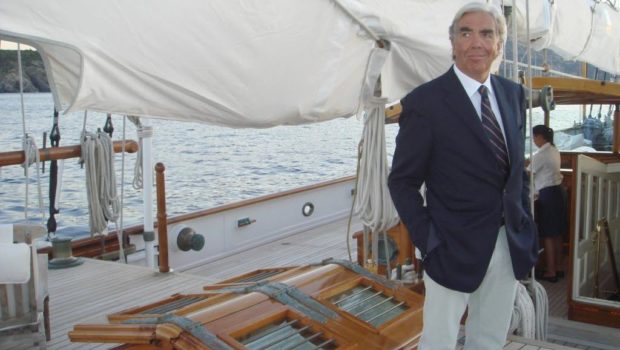


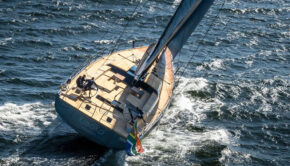
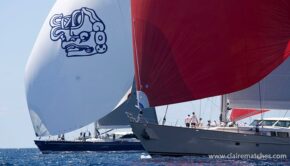
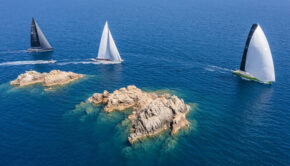
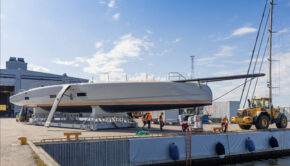
 We’ll keep your information safe.
We’ll keep your information safe.